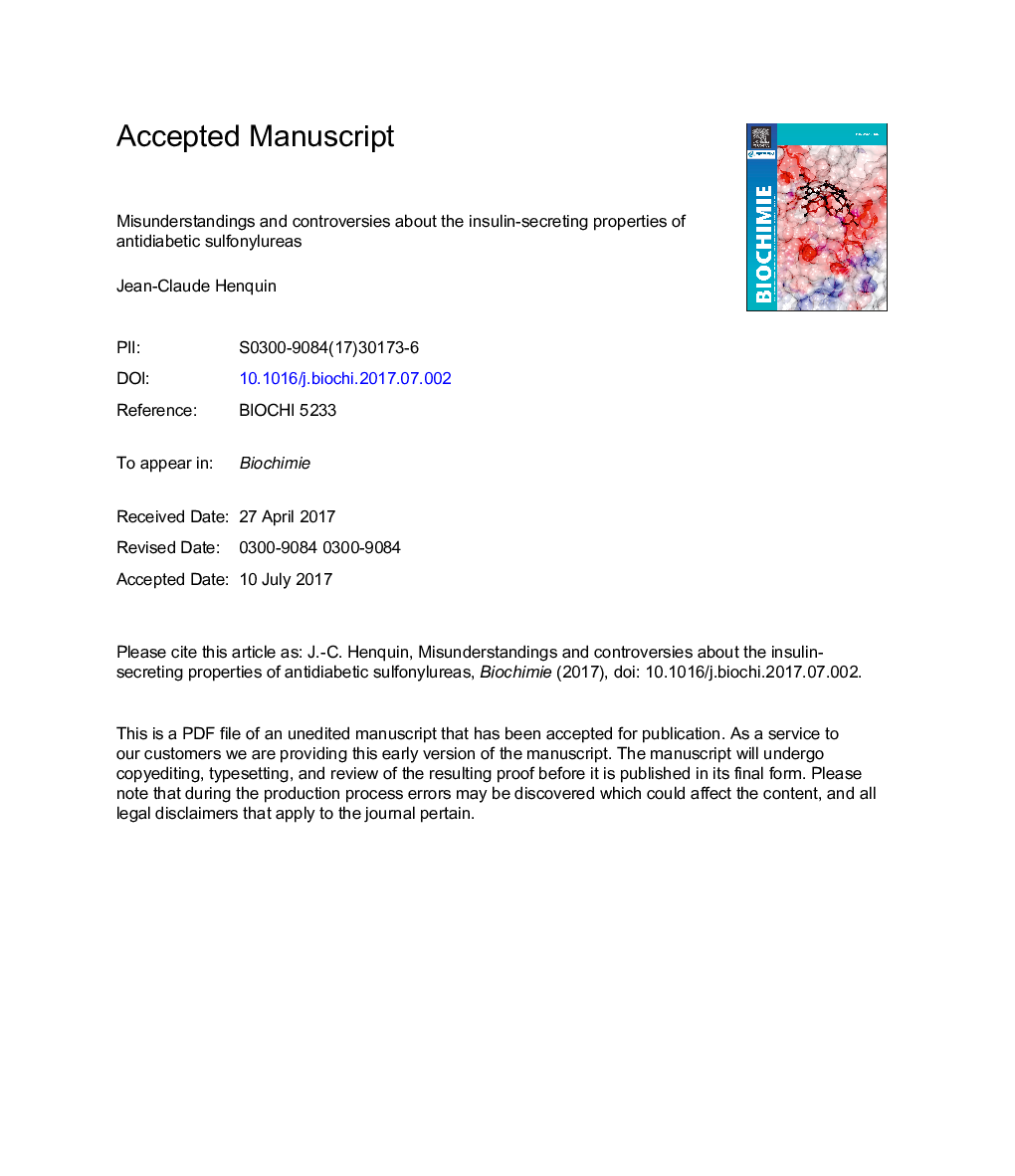| کد مقاله | کد نشریه | سال انتشار | مقاله انگلیسی | نسخه تمام متن |
|---|---|---|---|---|
| 8304273 | 1538389 | 2017 | 25 صفحه PDF | دانلود رایگان |
عنوان انگلیسی مقاله ISI
Misunderstandings and controversies about the insulin-secreting properties of antidiabetic sulfonylureas
ترجمه فارسی عنوان
ناسازگاری و اختلاف در مورد خواص انسولین ترشح کننده سولفونیل اوره ضددرد
دانلود مقاله + سفارش ترجمه
دانلود مقاله ISI انگلیسی
رایگان برای ایرانیان
کلمات کلیدی
سولفونیل اوره، ترشح انسولین، دیابت نوع 2، سلولهای پانکراس β،
موضوعات مرتبط
علوم زیستی و بیوفناوری
بیوشیمی، ژنتیک و زیست شناسی مولکولی
زیست شیمی
چکیده انگلیسی
After 60 years of use in the treatment of type 2 diabetes, hypoglycemic sulfonylureas remain a recommended option in current therapeutic charts. Their binding to sulfonylurea receptor-1, the regulatory subunit of ATP-sensitive potassium channels in the plasma membrane of pancreatic β-cells, leads to closure of the channels, membrane depolarization and influx of Ca2+ through voltage-gated calcium channels. The resulting increase in cytosolic Ca2+ triggers exocytosis of insulin granules. Sulfonylureas and glucose thus produce the same triggering signal but, unlike sulfonylureas, glucose does so via acceleration of β-cell metabolism. Glucose metabolism also produces amplifying signals that approximately double the secretory response to triggering Ca2+. One persistent misunderstanding about sulfonylureas is the alleged glucose-independence of their effects. It is correct that high concentrations of these drugs can induce insulin secretion in low glucose and cause hypoglycemic episodes in treated patients. Conversely, that untoward effect is erroneously considered as evidence that their therapeutic action is independent of glucose. Another evolving controversy about the action of sulfonylureas in β-cells is whether, like glucose, they also produce intracellular amplifying signals able to augment the efficacy of Ca2+ on exocytosis. The aims of this review are to dissipate the misunderstanding and discuss the controversy. Reasons why proposed amplifying effects of sulfonylureas are unlikely to be relevant for their action in vivo will be presented. Possible interactions of sulfonylureas and glucagon-like peptide-1 in β-cells will be discussed. Mechanisms whereby the ambient glucose concentration modulates the insulin-secreting action of therapeutic concentrations of sulfonylureas will be explained.
ناشر
Database: Elsevier - ScienceDirect (ساینس دایرکت)
Journal: Biochimie - Volume 143, December 2017, Pages 3-9
Journal: Biochimie - Volume 143, December 2017, Pages 3-9
نویسندگان
Jean-Claude Henquin,
